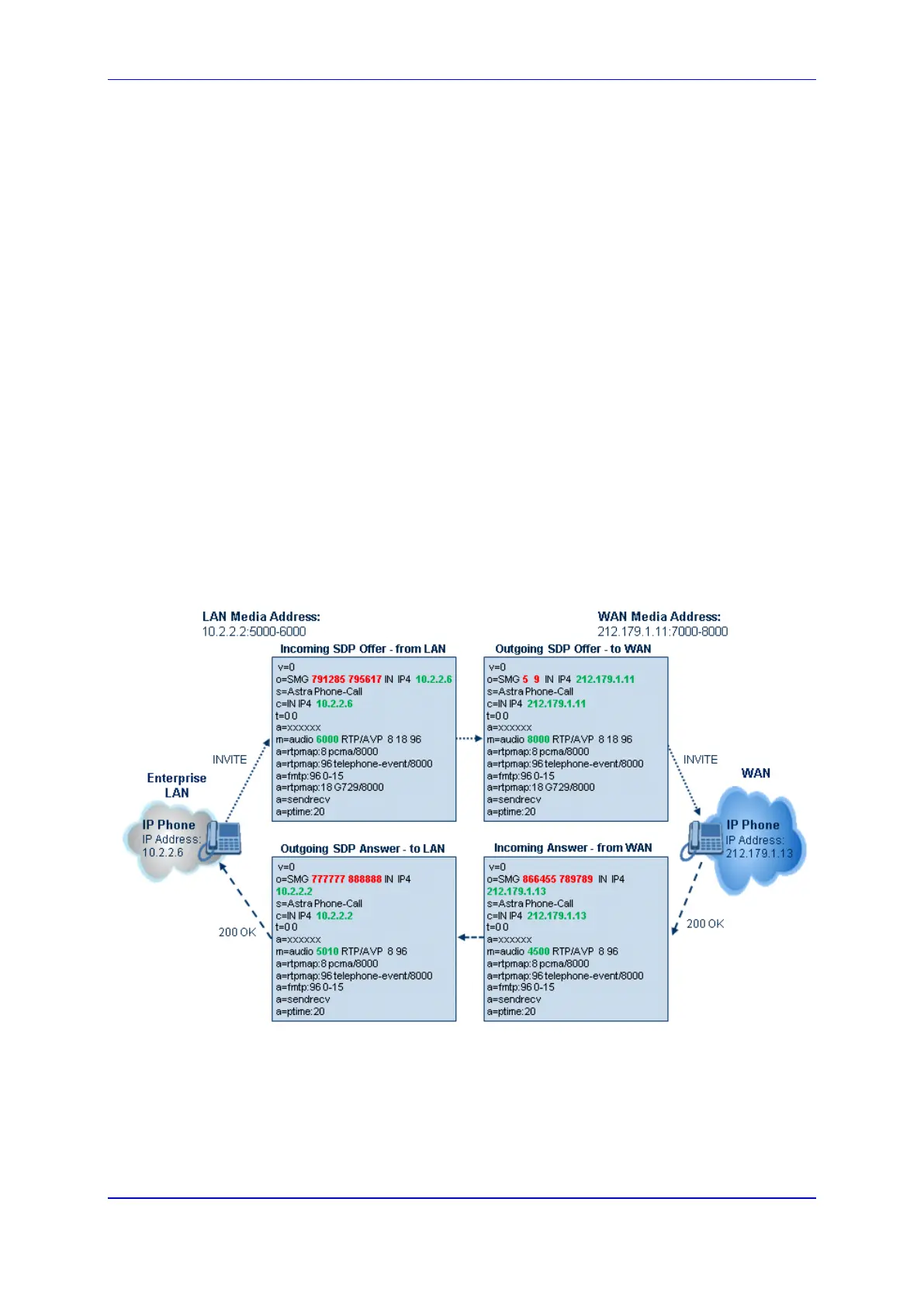Version 6.8 327 Mediant 2600 E-SBC
User's Manual 20. SBC Overview
Media Anchoring with Transcoding: RTP traverses the device and each leg uses a
different coder or coder parameters (DSP resources are required). For more
information, see ''Media Anchoring with Transcoding'' on page
327.
No Media Anchoring: The RTP packet flow does not traverse the device. Instead, the
two SIP UA's establish a direct RTP/SRTP flow between one another (see ''No Media
Anchoring'' on page
329).
20.4.1 Media Anchoring without Transcoding (Transparent)
To direct the RTP to flow through the device (for NAT traversal, firewall and security), all IP
address fields in the SDP are modified:
Origin: IP address, session and version id
Session connection attribute ('c=' field)
Media connection attribute ('c=' field)
Media port number
RTCP media attribute IP address and port
Each SBC leg allocates and uses the device's local ports (e.g., for RTP\RTCP\fax). The
local ports are allocated from a Media Realm associated with each leg. The legs are
associated with a Media Realm as follows: If the leg's IP Group is configured with a Media
Realm, then this is the associated Media Realm; otherwise, the leg's SRD Media Realm is
the associated one. The figure below illustrates an example of SDP handling for a call
between a LAN IP Phone 10.2.2.6 and a remote IP Phone 212.179.1.13 on the WAN.
Figure 20-3: SDP Offer/Answer Example
20.4.2 Media Anchoring with Transcoding
The device performs transcoding when there are no common coders between the two user
agents (i.e., the SDP answer from one user agent doesn't include any coder included in the
offer previously sent by the other user agent). For transcoding, the device can be
configured to add media capabilities to user agents pertaining to a specific IP Group, and

